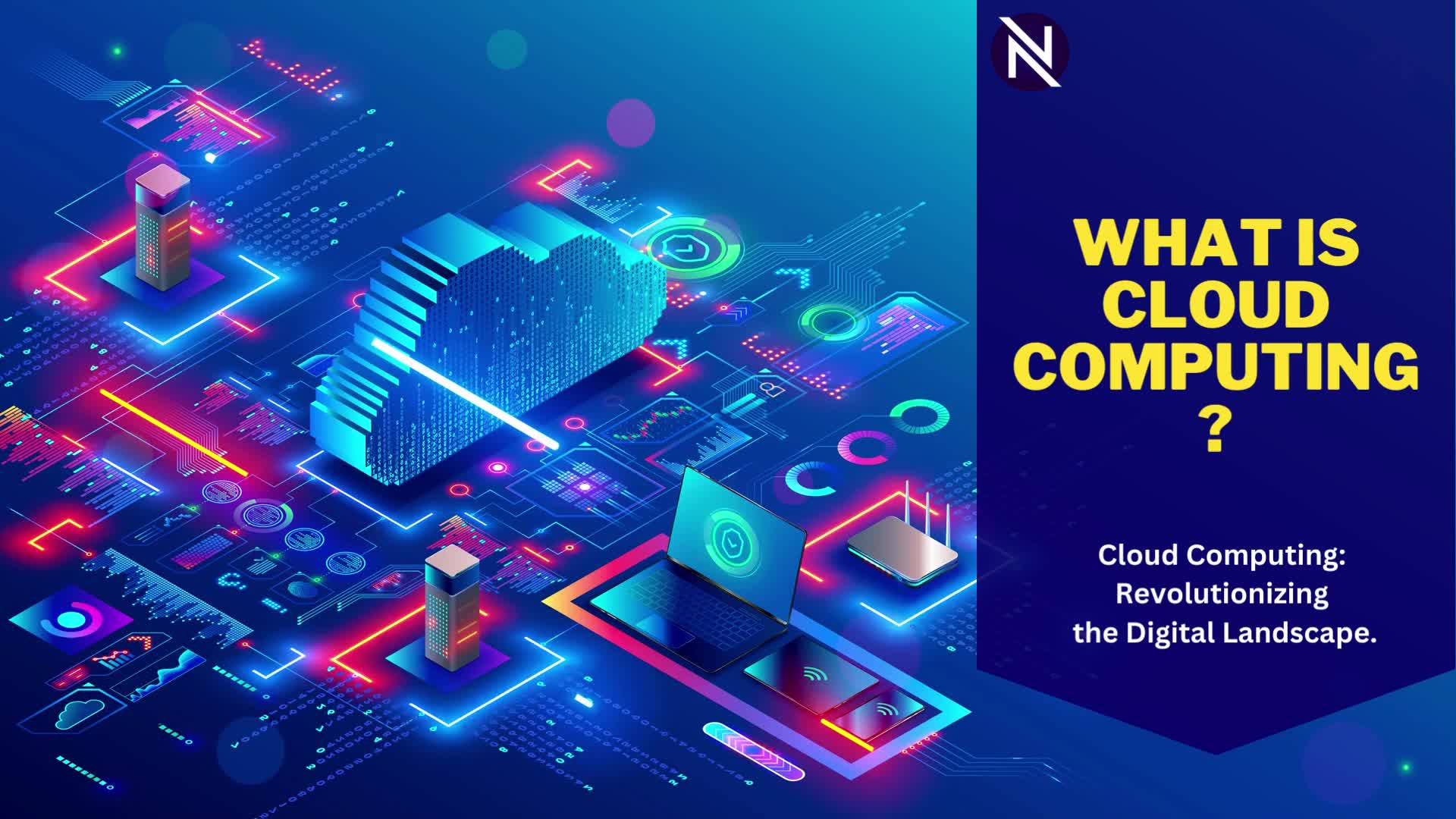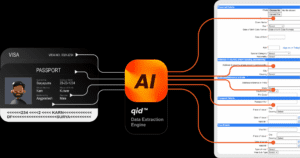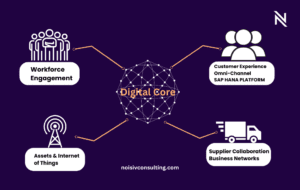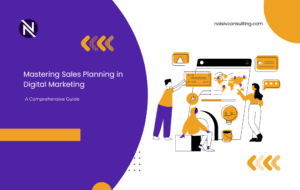Cloud Computing: Revolutionizing the Digital Landscape
The rapid advancement of technology has led to a profound transformation in the way individuals and organizations access, store, and manage their data and applications. At the forefront of this digital revolution stands cloud computing, a powerful paradigm that has reshaped the IT landscape and become an integral part of modern life. In this comprehensive article, we will delve deep into the world of cloud computing, exploring its fundamental principles, various service models, advantages, challenges, and far-reaching impact on industries and everyday life.
Download:- India’s 1st ID Gateway – qid
Demystifying Cloud Computing
1.1 What is Cloud Computing?
At its essence, cloud computing is a technology that provides users with access to a wide array of computing resources and services over the internet. These resources encompass everything from computing power, storage, and databases to networking, software, and more. Crucially, they are offered as services, eliminating the need for users to maintain physical hardware and software on their premises.
1.2 Key Characteristics of Cloud Computing
Cloud computing is defined by several key characteristics that set it apart from traditional computing models:
1.2.1 On-Demand Self-Service
One of the fundamental features of cloud computing is on-demand self-service. Users have the capability to provision and manage resources as needed, without requiring human intervention from service providers. This empowers users with a high degree of autonomy and control over their computing resources.
1.2.2 Broad Network Access
Cloud services are accessible over the internet from a variety of devices, ranging from laptops and desktops to smartphones, tablets, and IoT (Internet of Things) devices. This accessibility from a multitude of platforms allows for unprecedented flexibility in how and where users work and access their applications and data.
1.2.3 Resource Pooling
Cloud providers pool their computing resources, such as servers and storage, to serve multiple customers simultaneously. This pooling of resources allows for efficient utilization and sharing of infrastructure, resulting in cost savings and improved resource management.
1.2.4 Rapid Elasticity
Cloud resources are designed to be rapidly elastic, meaning they can be quickly scaled up or down in response to changing demands. This flexibility ensures that organizations can adapt to fluctuations in workload, guaranteeing optimal performance and cost-efficiency.
1.2.5 Measured Service
In the cloud computing model, users are billed based on their actual usage of resources. This measured service approach means that users only pay for the computing resources they consume, providing cost control and transparency.
Cloud Service Models
Cloud computing offers a variety of service models, each catering to specific needs and use cases. These models dictate the level of control and responsibility users have over their computing environment. The primary cloud service models include:
2.1 Infrastructure as a Service (IaaS)
Infrastructure as a Service (IaaS) provides virtualized computing resources over the internet. Users can rent virtual machines, storage, and networking components, allowing them to run their own operating systems and applications. IaaS offers a high degree of control over the underlying infrastructure, making it a suitable choice for organizations with specific requirements for their computing environment.
2.2 Platform as a Service (PaaS)
Platform as a Service (PaaS) takes a step further by offering a platform and environment for developers to build, deploy, and manage applications without the complexities of infrastructure management. PaaS solutions include development tools, database management systems, and hosting services. PaaS streamlines the application development process, allowing developers to focus on writing code and bringing their applications to market faster.
2.3 Software as a Service (SaaS)
Software as a Service (SaaS) delivers software applications over the internet on a subscription basis. Users can access and use these applications through web browsers without the need for installation or maintenance. SaaS applications cover a wide range of functions, including office productivity, customer relationship management (CRM), email, and collaboration tools. This model is characterized by its simplicity and convenience, as users can access software from any device with an internet connection.
2.4 Function as a Service (FaaS) or Serverless Computing
Function as a Service (FaaS), often referred to as serverless computing, is a cloud service model that allows developers to run code in response to specific events or triggers without managing servers. In this model, developers write discrete functions that are executed in response to events such as user requests or data changes. Serverless computing is highly scalable and cost-effective, as users only pay for the compute time their functions consume.
Cloud Deployment Models
Cloud computing offers a range of deployment options, allowing organizations to choose the model that best aligns with their specific needs, preferences, and constraints. The primary cloud deployment models are as follows:
3.1 Public Cloud
Public clouds are owned and operated by cloud service providers and are made available to the general public. These clouds offer a cost-effective and scalable solution for organizations, as they eliminate the need for on-premises infrastructure. Public clouds are particularly suitable for startups and small to medium-sized businesses that require flexibility and rapid scalability.
3.2 Private Cloud
Private clouds are dedicated to a single organization and can be hosted either on-premises or by a third-party provider. They offer greater control, security, and customization options but typically involve higher upfront costs due to infrastructure investment. Private clouds are commonly adopted by large enterprises and organizations with specific compliance or security requirements.
3.3 Hybrid Cloud
Hybrid clouds combine elements of both public and private clouds. Organizations using a hybrid cloud approach can seamlessly move workloads and data between the two environments. This model offers flexibility, allowing organizations to choose the most suitable environment for each workload based on factors like performance, security, and compliance.
3.4 Multi-Cloud
Multi-cloud strategies involve the use of multiple cloud providers to meet different requirements. By leveraging the services of multiple cloud providers, organizations can mitigate risks, avoid vendor lock-in, and optimize performance. Multi-cloud architectures provide redundancy and the ability to select the best services from different providers.
Advantages of Cloud Computing
The adoption of cloud computing has ushered in a multitude of advantages for organizations and individuals alike. These advantages have contributed to the widespread adoption of cloud technologies. Key benefits of cloud computing include:
4.1 Cost Efficiency
Cloud services eliminate the need for upfront investments in hardware and software infrastructure. Users pay only for the computing resources they consume, reducing capital expenses and improving cost predictability. This cost-efficiency is particularly advantageous for startups and small businesses with limited budgets.
4.2 Scalability
Cloud resources can be easily scaled up or down on-demand, ensuring that resources match actual requirements. This scalability is invaluable for organizations with fluctuating workloads or those experiencing rapid growth. Cloud providers offer a virtually limitless pool of resources, making it possible to accommodate even the most dynamic needs.
4.3 Accessibility and Flexibility
Cloud services are accessible from anywhere with an internet connection, allowing users to work, collaborate, and access applications and data from remote locations. This accessibility has been instrumental in enabling remote work and supporting the increasingly mobile workforce. Cloud computing is device-agnostic, accommodating a wide range of devices and platforms, including laptops, smartphones, and tablets.
4.4 Reliability and Availability
Reputable cloud providers offer high levels of uptime and redundancy. Data is often replicated across multiple data centers in different geographic regions, reducing the risk of data loss due to hardware failures or disasters. This level of reliability ensures that critical applications and data are accessible when needed.
4.5 Security
Cloud providers invest heavily in security measures to protect their infrastructure and customer data. These security measures include data encryption, access controls, threat detection, and regular security audits. As a result, data stored in the cloud is often more secure than data stored on local servers. Cloud providers also offer compliance certifications for various industry standards, addressing the security and compliance needs of organizations.
Use Cases and Applications
Cloud computing has found applications across a wide range of industries and use cases, empowering organizations to achieve greater efficiency, innovation, and agility. Some prominent use cases and applications of cloud computing include:
5.1 Data Storage and Backup
Cloud storage services, such as Amazon S3, Google Cloud Storage, and Microsoft Azure Blob Storage, provide secure, scalable, and cost-effective solutions for storing and backing up data. Organizations can leverage cloud storage for both short-term backup needs and long-term data archiving.
5.2 Web Hosting and Development
Platform as a Service (PaaS) platforms, such as Heroku and Microsoft Azure App Service, simplify web hosting and application development. These platforms handle infrastructure management tasks, allowing developers to focus on writing code and delivering applications to market faster.
5.3 Big Data and Analytics
Cloud platforms, including Amazon Web Services (AWS), Google Cloud Platform (GCP), and Microsoft Azure, offer powerful tools and services for processing and analyzing large datasets. These platforms are instrumental in running big data projects, facilitating data-driven decision-making, and uncovering valuable insights.
5.4 Software Development and Testing
Developers can harness cloud resources to build, test, and deploy applications quickly. Function as a Service (FaaS) or serverless computing, in particular, simplifies the development lifecycle by enabling developers to write code that runs in response to specific events or triggers.
5.5 Internet of Things (IoT)
Cloud computing plays a pivotal role in supporting IoT applications. IoT devices generate vast amounts of data, which is sent to the cloud for processing, storage, and analysis. Cloud platforms provide the necessary infrastructure for collecting, managing, and deriving insights from IoT data.
5.6 Artificial Intelligence (AI) and Machine Learning
Cloud providers offer AI and machine learning services that enable organizations to build and deploy machine learning models without extensive expertise in data science. These services include pre-built algorithms, model training, and inference capabilities, making AI and ML accessible to a broader audience.
Challenges and Concerns
While cloud computing offers a multitude of benefits, it is not without its challenges and concerns. Organizations must navigate these issues to ensure a successful cloud adoption journey. Key challenges and concerns include:
6.1 Security and Privacy
Data breaches and privacy concerns are the top challenges associated with cloud computing. Organizations must implement robust security measures, including encryption, access controls, and threat detection, to protect sensitive data. Compliance with data protection regulations, such as GDPR and HIPAA, is also crucial.
6.2 Data Transfer and Bandwidth Costs
Transferring large volumes of data to and from the cloud can incur additional bandwidth costs and consume time, impacting performance. Organizations must carefully plan data migration strategies to minimize costs and downtime.
6.3 Vendor Lock-In
Adopting proprietary cloud services can lead to vendor lock-in, making it challenging to migrate workloads to other providers or back to on-premises infrastructure. To mitigate this concern, organizations can opt for open standards and interoperable solutions.
6.4 Downtime and Service Reliability
Although cloud providers strive for high availability, outages can occur, affecting business operations and causing downtime. Organizations should consider redundancy and disaster recovery strategies to minimize the impact of outages.
6.5 Compliance and Legal Issues
Meeting industry-specific regulations and compliance standards can be challenging in a cloud environment. Organizations must carefully assess their cloud provider’s compliance certifications and take steps to ensure they meet their own regulatory requirements.
The Future of Cloud Computing
The cloud computing landscape continues to evolve, driven by technological advancements and shifting industry dynamics. Several trends and developments are shaping the future of cloud computing:
7.1 Edge Computing
Edge computing extends cloud capabilities to the edge of the network, reducing latency and enabling real-time data processing. This is particularly important for applications like IoT and autonomous vehicles, where immediate decision-making is critical.
7.2 Quantum Computing
Quantum computing represents a groundbreaking frontier in computing power. It has the potential to solve complex problems that are currently infeasible for classical computers. While still in its early stages, quantum computing could usher in a new era of innovation and computation.
7.3 Hybrid and Multi-Cloud Strategies
As organizations continue to adopt cloud technologies, hybrid and multi-cloud strategies will become more prevalent. These strategies offer greater flexibility and redundancy, allowing organizations to tailor their cloud environments to specific workloads and requirements.
7.4 Enhanced Security Measures
Security will remain a top priority for cloud providers and users. Cloud providers will continue to invest in advanced security technologies and practices to combat evolving cyber threats. End-to-end encryption and zero-trust security models are expected to gain prominence.
7.5 Sustainability Initiatives
Efforts to reduce the environmental impact of data centers will gain importance. Cloud providers will increasingly focus on using renewable energy sources, optimizing data center efficiency, and adopting sustainable practices to minimize their carbon footprint.
Conclusion: The Cloud’s Ever-Expanding Horizon
Cloud computing has not only revolutionized the way we access and manage computing resources but has also laid the foundation for a connected and data-driven future. Its flexibility, scalability, cost-efficiency, and accessibility have made it an indispensable technology for businesses and individuals alike. As cloud technologies continue to evolve and mature, their impact on industries, innovation, and daily life will only become more profound. Embracing the opportunities and addressing the challenges of cloud computing is essential for organizations seeking to thrive in the digital era.








